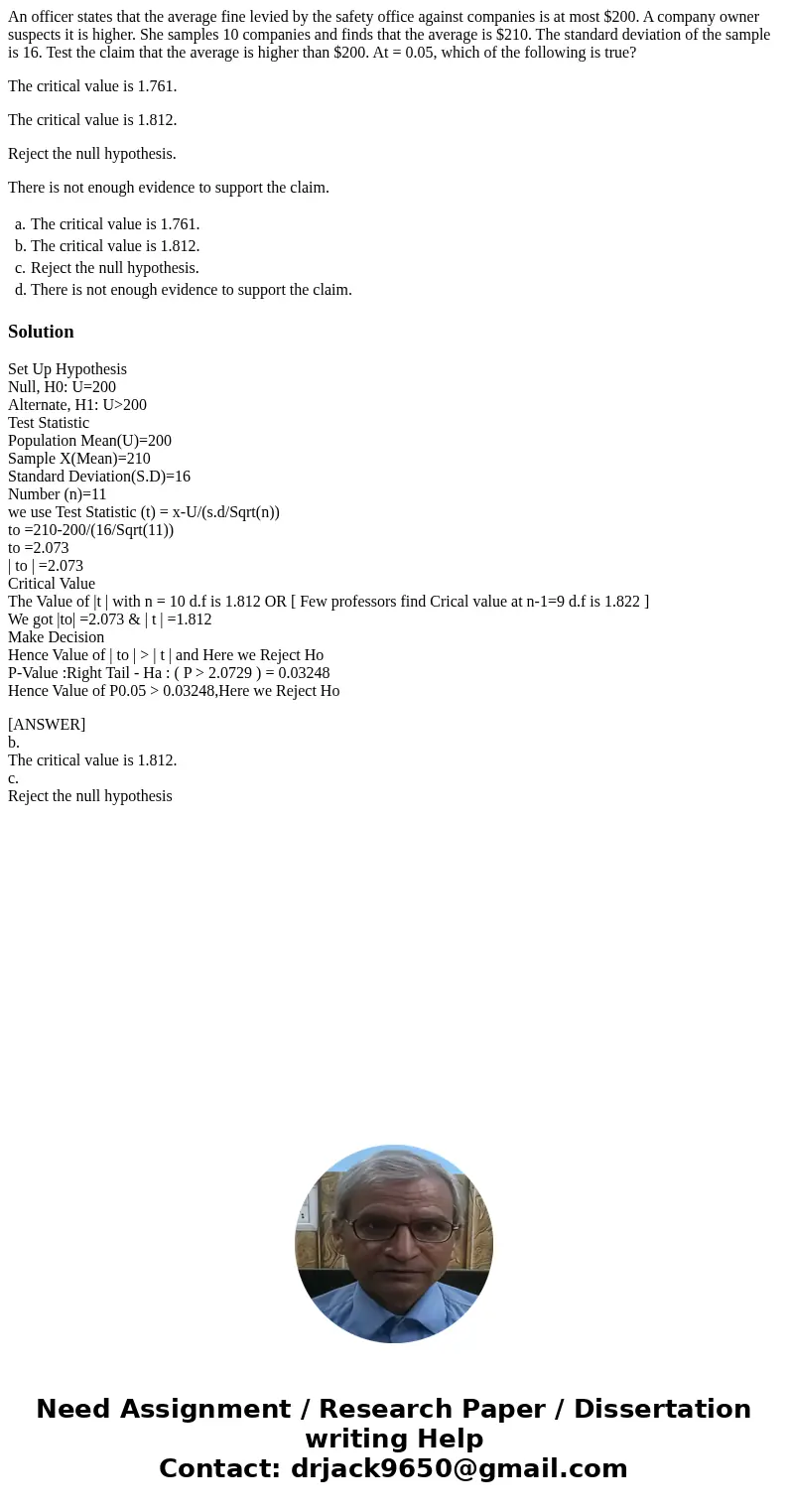An officer states that the average fine levied by the safety
An officer states that the average fine levied by the safety office against companies is at most $200. A company owner suspects it is higher. She samples 10 companies and finds that the average is $210. The standard deviation of the sample is 16. Test the claim that the average is higher than $200. At = 0.05, which of the following is true?
The critical value is 1.761.
The critical value is 1.812.
Reject the null hypothesis.
There is not enough evidence to support the claim.
| a. | The critical value is 1.761. | |
| b. | The critical value is 1.812. | |
| c. | Reject the null hypothesis. | |
| d. | There is not enough evidence to support the claim. |
Solution
Set Up Hypothesis
Null, H0: U=200
Alternate, H1: U>200
Test Statistic
Population Mean(U)=200
Sample X(Mean)=210
Standard Deviation(S.D)=16
Number (n)=11
we use Test Statistic (t) = x-U/(s.d/Sqrt(n))
to =210-200/(16/Sqrt(11))
to =2.073
| to | =2.073
Critical Value
The Value of |t | with n = 10 d.f is 1.812 OR [ Few professors find Crical value at n-1=9 d.f is 1.822 ]
We got |to| =2.073 & | t | =1.812
Make Decision
Hence Value of | to | > | t | and Here we Reject Ho
P-Value :Right Tail - Ha : ( P > 2.0729 ) = 0.03248
Hence Value of P0.05 > 0.03248,Here we Reject Ho
[ANSWER]
b.
The critical value is 1.812.
c.
Reject the null hypothesis

 Homework Sourse
Homework Sourse